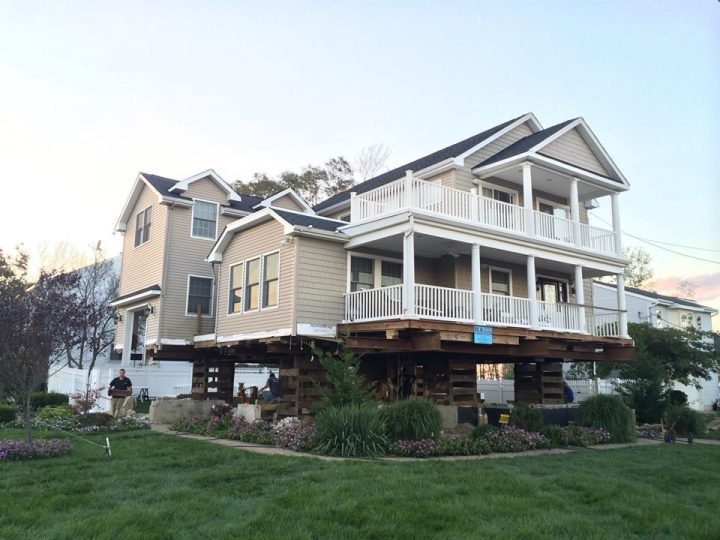 The greatest misconception people have about anime in the wider community today is the perception of studios as if they’re consistent beings As if production staff all exist within the pool that we call A-1 Pictures, Brain’s Base, or PA Works However, not only are most productions run by freelancers, who come and go depending on where their next job is, but in how staff has a tendency of moving around a lot as well And nowhere is this more evident than Studio Madhouse.
The greatest misconception people have about anime in the wider community today is the perception of studios as if they’re consistent beings As if production staff all exist within the pool that we call A-1 Pictures, Brain’s Base, or PA Works However, not only are most productions run by freelancers, who come and go depending on where their next job is, but in how staff has a tendency of moving around a lot as well And nowhere is this more evident than Studio Madhouse.
There are many people within the anime space that, when asked for their favorite studio, will immediately fire back with, ‘Studio Madhouse’. And that is totally cool, but it’s important to understand that the studio has changed drastically over the past six years. You could say there’s two versions of the studio, and they can be clearly split into pre-2011 and post-2011 Madhouse. There’s an argument to be made to move that date back to around 2008-2009, when the anime industry had to adapt to survive Japan’s recession at the time, but the bigger changes at Madhouse specifically came a few years later.
So, for the time being, Madhouse and the rest of the industry survived by increasing the amount of freelancing and outsource work, and by Kyoto Animation doing exactly the opposite. But to really tell the story of how Madhouse fell, we must start with how the studio stood up in the first place. The year was 1972, it was the Golden Age of the Rolling Stones, the release of The Godfather, oh, and the Vietnam War. But alongside these events, Osamu Tezuka’s Mushi-Production went bust, proving to be both the worst and best thing to happen to TV anime.
On one hand, the studio that invented TV anime had gone bust, but on the other hand, all of the talents involved went on to create their own studios such as TMS Entertainment, Kyoto Animation Shaft Sunrise Studio Ghibli and with the leads of anime producer, Masao Maruyama, Studio Madhouse. As years came to pass, Madhouse had a very good grip on its productions, with stuff like Legend of the Galactic Heroes, Barefoot Gen and that Wizard of Oz adaptation set after the nuclear fallout. Anime’s weird. But anyways, when we got to the late 90s and anime began its big boom after the economic difficulties earlier that decade, Masao Maruyama showed what the term ‘vetrum producer’ really means, facilitating huge deals and overseeing some incredible creative projects. (Music) First came Satoshi Kon with the amazing Perfect Blue and Millenium Actress then Takeshi Koike makes himself known with the Afro Samurai pilot in 2003, going on to create Redline, one of the highlights of the studio library, then animator, Hiroshi Hamasaki, makes his directorial debut with Texhnolyze, and goes on to create Shigurui.
Then, Masayuki Kojima brings his Magical Shopping Arcade Abenobashi, Monster and Piano no Mori. And then, Mamoru Hosoda leaves Tohei Animation and starts to produce The Girl Who Leapt Through Time and Summer Wars at Madhouse. Meanwhile, Tetsuro Araki is directing Death Note and High School of the Dead, and just to top it off, Masao Maruyama personally calls up genius director and animator, Masaaki Yuasa, which led to the production of Kaiba and Tatami Galaxy. And that’s just the directors too! But not just any directors, these are some of the biggest names in the industry. Satoshi, Kon, Hosoda, Araki, Koike, Kojima, not the Metal Gear one, Yuasa, and they all worked under the same roof. Just on different days, presumably, or it would get a bit crowded.
However, in the world of reality, nothing goes that smoothly. In 2010, the creator of Paprika, Perfect Blue, Millenium Actress, and Paranoia Agent, Satoshi Kon, died of pancreatic cancer leaving his last film, Dreaming Machine, incomplete. Kon told the film staff to not worry too much about finishing the film but there was one person in particular who didn’t listen. (Music) With financial difficulties starting to hit Madhouse, that we’ve mentioned earlier, Masao Maruyama left the studio that he created to form his own team at Studio Mappa in 2011 taking Dreaming Machine with him with the hope that he would be able to finish it there. But what you need to understand is that was Maruyama. Even the name ‘Madhouse’ comes from Maruyama, Dezaki, and Hayashi three of the studio’s founders. And after Dezaki’s passing, and Maruyama and Rintaru’s departure there’s only one founder left – Yoshiaki Kawajiri. The only one who didn’t get to be a part of the naming, unfortunately. Anyways, many of the relationships and deals that had accumulated over the years were because of Maruyama and so, things changed. There’s this solid point in time around the turn of the decade where the staff just left.
Some related to Maruyama’s departure, some for physical reasons and others for spending seven fucking years on a car film, albeit a really goddamn good one. Masaaki Yuasa hasn’t worked on Madhouse since, bringing his next work to Tatsunoko instead. Tetsuro Araki left in 2011 to work out Production I.G on Guilty Crown and eventually, Attack on Titan. Hiroshi Hamazaki went off and did Stein’s Gate in 2011 on White Fox. Kojima produces last Madhouse production in 2011 with his next work Black Bullet, being a cinema citrus. Mamoru Hosoda left Madhouse in 2011 to create Studio Chizu at which he finished Wolf Children, and created Boy and the Beast. That’s the soundtrack you’re listening to right now, by the way.
Try-again-director, Satoshi Nishimura, did his last Madhouse work in 2010 with Bad Lands Rumble and is now working with Maruyama on Ushio and Tora. Umm..who else? Uhh.. Takeshi Koike was fired around 2010 and yeah, I’m talking about his film. And meanwhile, Maruyama goes over to Mappa and manages to get the bloody Zero Escape creator to write Punch Line. Getting highly established game writers to write anime is not something that happens. It’s kind of cheating.
So that is the silent fall of Studio Madhouse. Around the turn of the decade, some of the greatest creative minds involved in the studio just left. Some came along with Maruyama to Mappa some formed their own teams others just went freelance. No point in making announcements over every staff leave so we all just went with it. It’s only when you start to ask questions like, ‘Where’s High School of the Dead Season 2?’ or, a better example that you start to realize, ‘Hey, wait. Where’d everyone go?’
And so now, modern Madhouse is a shadow of its former self. Of course, the adaptation of Hunter x Hunter was fantastic, but stuff life the Marvel collection Mahou Sensou and those god-awful Hunter x Hunter films fail to impress audiences in general with a lot of hit or miss series in between that fail to capture audiences nearly as much as their past work once did. And productions like One Punch Man are just unfortunate. Yes, it’s amazing from a production standpoint but with little utilization of Madhouse staff, it’s not really their project which is unfortunate from a studio’s standpoint.
They may as well print, ‘Shingo Natsume Made This, We Helped on the Box’. Even BONES animator, Yutaka Nakamura, showed up uncredited to graffiti Madhouse’s work with ‘BONES RULEZ. WATCH CONREVO’ However, the hopes are that they may earn their own seal again in the future as we experience the silent restoration of Studio Madhouse. Ore Monogatari! and Chihayafuru were directed by Madhouse director, Morio Asaka. Hanayamata and No Game No Life were brought to us by Madhouse director, Atsuko Ishizuka and she is working on Prince of Stride: Alternative this season bringing back her trademark visual style that I’m really hoping to see executed in the original show.
Oda Nobuna director, Yuji Kumazawa, went on to work on Sunday Without God a year later and Death Parade became the studio’s first original work in the past four years. They are nowhere near the star teams of times gone by as much of the time cultivated within those walls have left, but I am confident that with this team, the studio can successfully reinvent itself whilst Mappa continues the legacy. And maybe they will be able to make Madhouse great again Ugh, that’s a Donald Trump slogan, isn’t it? Thanks for watching The Canipa Effect! It’s these sort of heavily researched videos that I enjoy doing most so let me know if there’s any topic that you’d like me to cover in the future.




